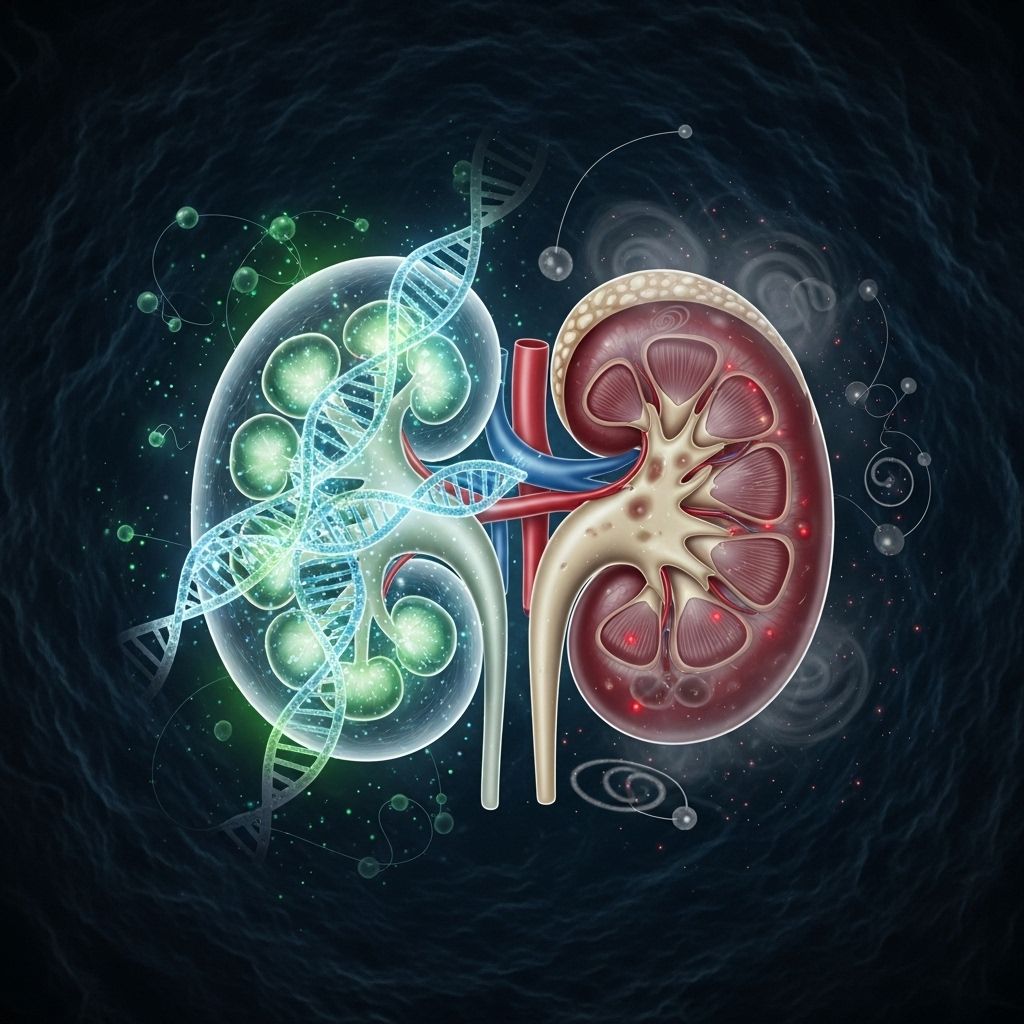Is IgA Nephropathy Genetic? Exploring Its Hereditary and Environmental Links
Learn how genes, family history, and environmental factors contribute to the risk and development of IgA nephropathy.

Is IgA Nephropathy Genetic? Understanding Its Hereditary Nature and Risk Factors
Immunoglobulin A (IgA) nephropathy, also known as Berger disease, is a rare but significant cause of chronic kidney disease and kidney failure worldwide. While much remains unclear about why some people develop this condition, decades of research point to complex interactions between genetic risk, family history, and environmental factors. This article provides an in-depth look at whether IgA nephropathy (IgAN) is genetic, key genes involved, the role of familial inheritance, and what it all means for individuals and families.
What Is IgA Nephropathy?
IgA nephropathy occurs when IgA antibodies—proteins produced by the immune system—build up in the tiny filtering units of the kidney called glomeruli. These deposits trigger inflammation and damage, ultimately reducing the kidney’s ability to filter waste from the blood. Over time, this can lead to chronic kidney disease or even progress to end-stage renal failure.
IgA nephropathy is considered an autoimmune disease because it’s driven by abnormal immune responses. It can affect people of any age, gender, or ethnic background, though its incidence is higher in certain groups.
Is IgA Nephropathy Hereditary?
The short answer is: most cases of IgA nephropathy are not inherited. However, a modest but meaningful proportion of people with IgAN develop it because they inherit certain genetic changes from their parents.
- Sporadic cases: About 90% or more of IgA nephropathy cases develop independently and are not directly inherited.
- Familial cases: Less than 10%, but possibly up to 15%, of cases are considered familial IgA nephropathy, where genetic factors are clearly involved and cases cluster within families.
Even in familial cases, genetics is rarely the sole factor—most evidence points to a combination of multiple genetic mutations alongside environmental triggers for disease development.
Understanding the Genetics of IgA Nephropathy
Unlike conditions caused by single gene mutations, IgA nephropathy is believed to be a polygenic disorder. This means that mutations or variations in several genes collectively influence a person’s risk.
Key Genes Linked to IgA Nephropathy
Genome studies have identified over 30 gene regions thought to influence IgAN risk. The strongest evidence implicates the following genes, especially in families where multiple members are affected:
- IGAN1 (Chromosome 6): Associated with increased susceptibility in certain families.
- IGAN2 (Chromosome 2): Another locus linked to familial clustering of IgAN.
- SPRY2 (Chromosome 13): Implicated in rare familial forms of the disease.
Mutations in these genes can disrupt the immune system’s normal handling of IgA, affecting its structure and how it interacts in the body. Importantly, these genes account for only about 11% of overall IgAN risk, highlighting the role of other factors.
Other Notable Genetic Findings
- O-glycosylation defects: Many people with IgAN have defective glycosylation (a chemical modification) of the IgA1 molecule. This defect shows high heritability (50–70%), reinforcing a strong genetic component in some families.
- Genome-wide studies: Up to 30 genetic loci are associated with IgAN, but no single mutation explains the majority of cases.
| Gene/Locus | Chromosome | Role | Relevance |
|---|---|---|---|
| IGAN1 | 6 | Familial clustering | Linked to higher disease incidence in specific families |
| IGAN2 | 2 | Familial clustering | Linked to hereditary forms |
| SPRY2 | 13 | Immune function & familial risk | Less common genetic variant in families |
| Multiple others | – | Immune modulation, IgA processing | Collectively account for up to 11% of total risk |
How Is IgA Nephropathy Inherited?
When IgA nephropathy does run in families, it most often follows an autosomal dominant pattern with incomplete penetrance. This means:
- Only one copy of the mutated gene is necessary to increase risk.
- Not everyone who inherits the gene develops the disease due to incomplete penetrance—other genetic, lifestyle, or environmental factors must also be present.
The inheritance of IgAN is complex and doesn’t follow simple Mendelian patterns. Even among families with clear genetic involvement, not every descendant will automatically develop symptoms.
Beyond Genetics: Role of Environment and Other Risk Factors
Although genetic predispositions play a role, environmental triggers are often needed for the disease to manifest. Experts believe that most cases result from a combination of genetic risk, immune changes, and external exposures.
Key Environmental and Associated Risk Factors:
- Infections: Particularly upper respiratory or gastrointestinal tract infections, can trigger disease flares in genetically susceptible people.
- Liver diseases: Chronic liver conditions, such as cirrhosis and long-standing hepatitis B or C, can accompany or precipitate IgA nephropathy.
- Celiac disease: This autoimmune digestive disorder increases IgAN risk, likely due to immune system cross-reactivity.
- Ethnic background: Higher prevalence is seen in people of East Asian, European, and certain Native American (Zuni and Navajo) heritage.
- Sex: Males are somewhat more likely to develop IgAN, though the reason is not fully understood.
Why Does IgA Build Up in the Kidneys?
IgA is normally produced to protect mucosal surfaces from infection. In IgA nephropathy, the problem lies with a particular subtype known as galactose-deficient IgA1 (Gd-IgA1). This abnormal antibody variant forms large immune complexes that the kidneys cannot effectively clear. These immune complexes become trapped in the glomeruli, provoking chronic inflammation and damage.
Research suggests the following process:
- The immune system produces an abnormal form of IgA that is deficient in galactose.
- Gd-IgA1 combines with other antibodies, forming immune complexes.
- These immune complexes deposit in the kidneys’ filtration structures (glomeruli), triggering inflammation and progressive injury.
Understanding these mechanisms is key for developing targeted therapies and for genetic counseling in families affected by IgAN.
References
- https://www.healthline.com/health/kidney-disease/is-iga-nephropathy-genetic
- https://igan.org/faq/
- https://www.kidneyfund.org/all-about-kidneys/other-kidney-diseases/iga-nephropathy
- https://www.jci.org/articles/view/74475
- https://pmc.ncbi.nlm.nih.gov/articles/PMC4934805/
- https://www.mayoclinic.org/diseases-conditions/iga-nephropathy/symptoms-causes/syc-20352268
- https://www.cuimc.columbia.edu/news/kidney-diseases-genetic-clues-are-uncovered
- https://my.clevelandclinic.org/health/diseases/5990-iga-nephropathy
Read full bio of Sneha Tete












